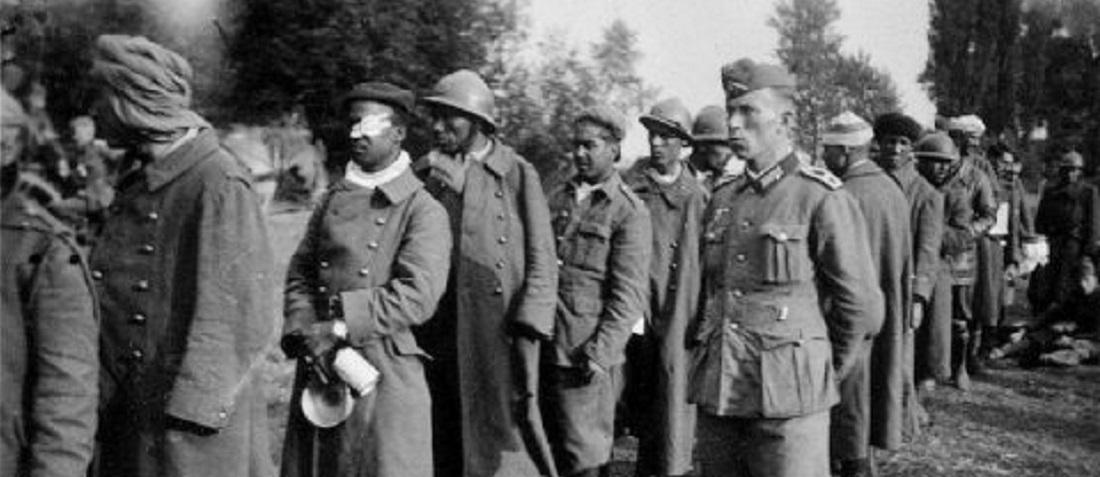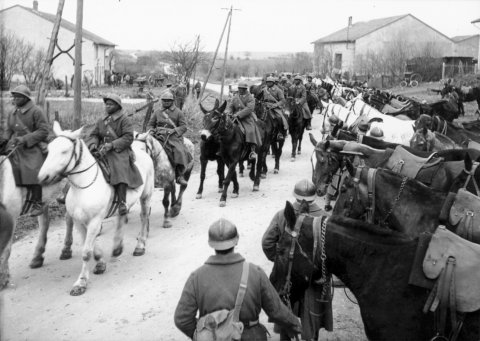The fighting at Chasselay
Sous-titre
19-20 June 1940

On 3 September 1939, Britain and France declared war on Nazi Germany. After a period of waiting and sporadic fighting known as the “Phoney War”, on 10 May 1940 an enemy offensive was launched from the Ardennes, which was to go on inexorably until the signing of the armistice brought it to a close on 22 June.
During that time, the defence of the Lyon area was indissociable from that of the Alpine front, under threat from the Italians, who had been at war with France since 10 June. It was also a strategic crossroads on the Germans’ route to the south.
In mid-June 1940, the German forces swept towards the Rhone Valley. Coming under the authority of the commander of the 14th Region, the group commanded by General Mesmay was assigned to the defence of north Lyon, along Routes Nationales 6 and 7.
The group comprised, among others, the Foreign Legion Infantry Battalion, two regional regiments and two regional tank sections. From 16 June, the 25th Regiment of Senegalese Tirailleurs (25th RTS), a three-battalion unit under Colonel Bouriand, was also assigned to it.
On 17 June, the Legionnaires, Senegalese tirailleurs and artillerymen were in position. The 1st Battalion, 25th RTS (Commander Alaury) was stationed along a line running from Saint-Germain-au-Mont-d’Or to Lissieu, while the 2nd Battalion (Captain Clément) covered the area between Fleurieux and Lentilly.
On 18 June 1940, at the request of the mayor of Lyon and speaker of the Chamber of Deputies, Édouard Herriot, and Rhône prefect Émile Bollaert, Lyon was declared an “open city”, requiring the French forces to withdraw, without committing any acts of resistance against the enemy troops.
But in the climate of confusion that reigned, General Olry considered the defence of this sector crucial to the protection of the Army of the Alps, whose job it was to fend off the Italians. General Mesnay therefore urged his troops to stand firm “with no thought of retreat”.

A column of Senegalese tirailleurs, April 1940. © ECPAD
On Route Nationale 7, the SS Totenkopf Division clashed, around Arbresle, Eveux and Lentilly, with the tirailleurs and Legionnaires, who put up a heroic resistance but were ultimately overwhelmed. The white survivors were taken as prisoners to Tarare; the Africans were executed on the spot.
On 19 June, elements of the Grossdeutschland Infantry Regiment came into contact with 1st Company, 25th RTS in the Chasselay area. Met by heavy fire, the German vanguard was forced to retreat. At 11 am, an intense bombardment of the French positions commenced and, at 2 pm, the attack was launched. The enemy made slow progress under the fire of the French 75 mm batteries.
The convent of Nevers, which dominated the road, was turned into a point of support: a small battery of field guns was set up there, supported by a handful of infantry commanded by Lieutenant de Montalivet. Momentarily surprised by this resistance, the Germans launched their attack. An unequal fight ensued. Inside the convent, the nuns looked after the wounded. Gradually, the ammunition ran out, the guns were destroyed, the men fell. The few remaining able-bodied soldiers were unable to prevent the enemy from taking the site. The wounded were finished off with bayonets. The sisters were threatened, but finally abandoned among the dead, in the ruins of their convent.
The surviving defenders were taken to Les Chères and shot dead, all except Lieutenant Pangaud.
In late afternoon, the defenders of hill 272, near Lissieu, were overwhelmed and surrounded, following the destruction of their two artillery pieces. Among the prisoners, 19 metropolitan French officers and soldiers and 19 African soldiers were executed.
At Montfort farm, a dozen French troops succeeded in holding off their attackers until the evening, before succumbing under enemy machine-gun fire.
That same afternoon, a German column skirted the pockets of French resistance and entered Lyon. The order was given to Colonel Bouriand to withdraw his troops. But some of them were cut off and could not be contacted, so they went on fighting until the following evening. Part of the regiment reached Rives-de-Gier.
On the afternoon of the 19th, Captain Gouzy regrouped his troops in the hills above Chasselay, near the Château du Plantin.
On the 20th, around 10 am, a German reconnaissance group was driven back. Around 1 pm, the enemy entered a deserted Chasselay. Its artillery then shelled the chateau sector, before launching its attack around 3 pm. The fighting was intense. Soon, the fifty-odd survivors, exhausted and out of ammunition, were overwhelmed.
On witnessing the savage treatment of the Senegalese prisoners, Captain Gouzy intervened and was shot, so that he had to be evacuated. Split into two groups, the 51 black prisoners and seven whites were taken to Les Chères. On arrival at the hamlet of Vide-Sac, the Senegalese were ordered to disperse across the fields. From the road, the Germans opened fire with machine guns, mowing down 48 of them, before crushing their bodies with two tanks.
These summary executions of black prisoners were commonplace: 18 were executed at Lentilly, 13 at Éveux, and in the Lyon neighbourhood of Vaise, 27 Senegalese tirailleurs were lined up against a wall, machine-gunned down, then left on public display for two days.
To give an idea of the harshness of the fighting and the violence of the repression, the estimated death toll for the 25th RTS was 1 384, of a total of around 1 800 men.

